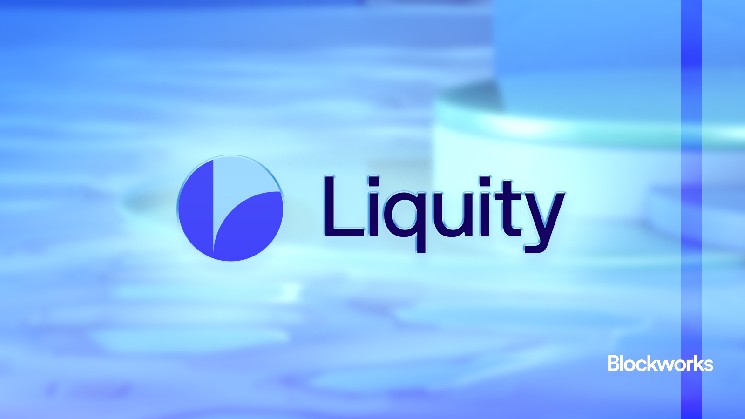Coinbase, the largest U.S.-based crypto exchange, adoptedChainlink’s Proof of Reserve (PoR) system to verify the reserves backing its cbBTC token. This is a strategic move aimed at reinforcing trust and transparency in decentralized finance (DeFi), especially when it comes to wrapped or collateralized assets.
Coinbase is utilizing Chainlink Proof of Reserve to increase the transparency of $4.6B+ worth of cbBTC reserves.
Proof of Reserve helps @coinbase ensure cbBTC reserves are verifiable onchain, with data published on @base & @ethereum.
BTCFi scales with Chainlink.
— Chainlink (@chainlink) May 29, 2025
cbBTC is a wrapped version of Bitcoin issued by Coinbase. With this integration, anyone can now verify—on-chain and in real time—that every cbBTC token is backed 1:1 with real BTC. In plain terms, this means no hidden gaps or mysterious liabilities. The reserve data is public, cryptographically verified, and automated through Chainlink’s decentralized oracle networks.
What Is Chainlink Proof of Reserve?
Chainlink’s PoR solution verifies that digital assets held by crypto firms are fully backed, providing greater transparency to depositors through public reserve disclosures or third-party audits. It works by feeding real-world reserve data onto public blockchains through decentralized oracles. These oracles are independent nodes that routinely check the reserves and broadcast the data on-chain.
If there’s a discrepancy or reserve volatility, the system triggers an update. But when things are stable, it saves on gas by not writing unnecessary data to the chain. This balance makes the system efficient without sacrificing accuracy or transparency.
Chainlink PoR currently secures over $8.5 billion in assets, with $3.5 billion of that value sitting in off-chain reserves such as fiat and treasuries, and $5 billion held as on-chain assets like wrapped tokens.
Why This Matters After the FTX Collapse
The fallout from the FTX collapse is still fresh. It exposed the risks of relying on centralized systems that lack transparency and use social trust as their foundation. FTX held only a fraction of what it owed users. Since then, the crypto space has become increasingly cautious about proof of reserves.
Chainlink’s PoR is designed to prevent these very failures. It does not rely on delayed third-party audits or opaque monthly statements. Instead, it delivers automated, verifiable data that’s visible to everyone. That’s a game-changer for transparency in digital finance.
The value here goes beyond retail. Institutions, sovereign investors, and compliance teams need concrete assurance that assets exist and are safely backed.
Boosting Confidence in cbBTC
By integrating Chainlink PoR into both the Base and Ethereum blockchains, Coinbase is ensuring that users can trust cbBTC to remain fully collateralized. The move comes at a time when demand for wrapped Bitcoin across DeFi is growing—but so is skepticism.
Many DeFi apps rely on wrapped Bitcoin to access BTC liquidity while staying on-chain. But if these assets aren’t backed 1:1, the risk of under-collateralization becomes real. That’s where PoR data feeds make the difference. They enable smart contracts to check the reserve status automatically and even trigger safety mechanisms if the reserves fall short.
This way, DeFi protocols don’t have to wait for someone to raise the alarm. The system does it by itself—instantly, publicly, and without bias.
Recently, Solv Protocol integrated Chainlink PoR to verify asset backing for its SolvBTC and real-world asset yield tokens. This added real-time, decentralized auditability to their systems.
Meanwhile, Chainlink also launched its Cross-Chain Interoperability Protocol (CCIP) v1.6 on the Solana mainnet. This upgrade now allows for secure asset movement between Solana and networks like Ethereum, BNB Chain, Arbitrum, and more.
Fixing What Traditional Finance Got Wrong
Traditional finance is built on opacity, permissioned access, and centralized control. Banks operate on fractional reserves and need regulators to enforce compliance. Yet even then, systemic risks persist.
Crypto was created as a response to that model. Bitcoin solved the double-spend problem without a central authority. DeFi took that further by enabling decentralized lending, trading, and asset management. But wrapped assets introduced new risks—specifically, collateral risk.
Chainlink PoR directly addresses this flaw. It brings the decentralization and openness of crypto to the very assets that power DeFi.
With Coinbase now backing its cbBTC token through Chainlink’s Proof of Reserves, a new benchmark is being set. It’s not just about transparency; it’s about reliability and risk management.















Leave a Reply